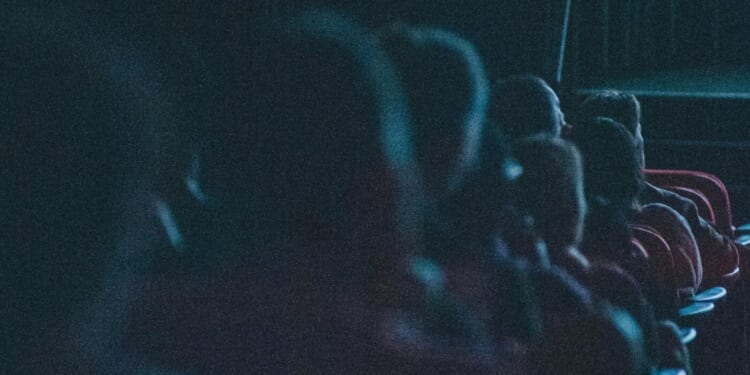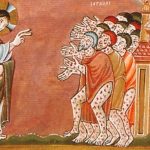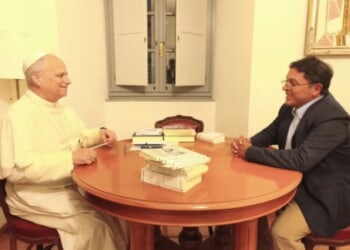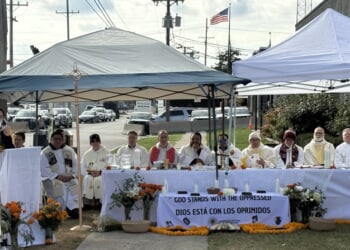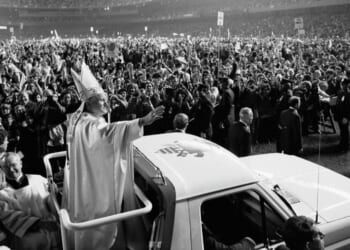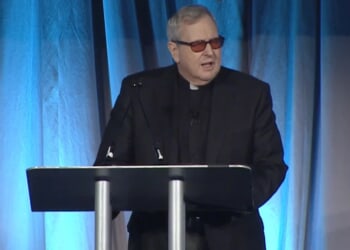In our walk with Christ, we can mistake “sanitizing” our lives for purity. This is especially true in the media we consume. Indeed, there are books, films, and television shows Christians simply should not expose themselves to—but the solution is not to avoid everything that seems questionable. Nor is it to arbitrarily baptize content to permit ourselves to consume it. For example, having a priest in a film does not make it inherently Catholic, but the presence of a Catholic imagination does.
This is why films like The Exorcist, The Rite, Nefarious, and Silence are, to me, deeply Catholic works that—when approached with discernment—can both entertain and edify. These films wrestle honestly with evil, possession, and despair without sanitizing them or reducing faith and the Church to token forces for good. We see grace and corruption existing side by side, and the very real struggle to choose between them. While fictional, such works insist that evil is real, that priests and sacraments matter, and that a battle rages all around us. Where the Catholic imagination is alive in art, faith is not a talisman against fear and evil but the only authentic way through them.
The Exorcist does not deepen my faith because it terrifies me into guarding my soul against the Enemy, nor does Silence move me merely because of its beauty or sorrow. What strengthens my faith in both is their honesty. In these stories, I see the human condition laid bare in all its uncertainty, doubt, and pain. I see myself in Fr. Karras and Regan; in both Fr. Rodrigues and Ferreira; and certainly in the wayward Kichijiro. I know the desolation of doubt and the confounding silence God has offered in my darkness. I know that living Christianity is not always as black and white as we wish it were, and that the space between despair and hope, doubt and belief is precisely where Christ is nearest.
If we peer beneath the head-spinning and nail-spitting, we find that following Christ can look far different from the sanitized depictions of Christianity so often offered to us. Here we see the reality of the Cross—where apparent defeat is a mighty victory, and power is perfected in weakness. The Catholic imagination is honest about evil and, in turn, forces us to be honest with ourselves. Would I step on an image of my Lord? Could my doubts or despair cut so deep that the foundation of my faith begins to tremble? What happens when evil is not a caricature but incarnational—and quiet?
The interior life is a series of failures and victories, yet I have learned the most from the failures I have dragged to the Cross. Sometimes, a victory is simply the feeling of having barely survived. Saints like John of the Cross and Ignatius of Loyola remind us that the spiritual life is not easy; rather, it is often painful and confusing. Yet Catholicism shies away from this interior suffering no more than it does from physical suffering—but it never renders either as spectacle.
This is why the brutality of the crucifixion in Gibson’s The Passion of the Christ is profoundly Catholic. It is why priests wrestling to reconcile obedience and love when God is silent and death is near are not merely dramatic figures, but mirrors of our own souls. It is why possession, in the Catholic imagination, is not a gimmick or a scare tactic to send us running to Confession. These are victories that do not necessarily look or feel like winning. They neither sanitize nor sensationalize the reality that we follow a crucified God, and that there is no Empty Tomb without Golgotha.
This, finally, is what keeps me Catholic. Purity does not mean avoiding the world, but encountering it truthfully. It does not mean sealing ourselves off from the mess of being human, but allowing grace to penetrate it. True holiness is not separation from the world but the sanctification of it. The God who became flesh entered the filth and fear of our world—not to keep His hands clean, but to redeem what was unclean.
The films that unsettle me most often do so because they hold up a mirror to that same truth. They reveal that the spiritual life is not a curated image of serenity, but a continual descent into the places where Christ has already gone before us. In those moments—whether in the confessional, in prayer, or even before a screen—we are confronted by our own poverty. And yet it is precisely there, in the poverty, that the mercy of God does its deepest work.
Purity, then, is not about separation but transformation. The Catholic imagination knows this instinctively: that the holy is not the absence of the profane, but its transfiguration. That is why The Exorcist keeps me Catholic. It refuses to lie about evil or about the cost of grace. It shows me a world where faith does not hover above suffering but passes through it; where a trembling priest, armed with a crucifix, stands in the gap between light and darkness—and wins, not by strength, but by surrender.
I don’t watch such films to feel safe. I watch them to remember that safety was never the promise. Salvation was.
Author’s Note: Rob Sexton is a Michigan-based writer and stationary engineer. He writes regularly at Costly Things where his new serial fiction series, The Fr. Gabriel Chronicles, examines the tension between grace and darkness and the interior movements of both. Read the latest installment here.

